Identifying roof leaks can be a daunting task, especially for DIYers who have never done it before. The first step is to familiarize yourself with the anatomy of a roof so you know what to look for when inspecting it.
Start by looking for signs of water damage, such as staining or discoloration on the ceiling or walls inside the house or around window frames and door frames on the outside. You should also inspect any visible flashing around chimneys, skylights, and plumbing vents for any gaps or broken seals that could let in water.
Next, check your attic or crawl space for areas where light is coming through from outside — this could indicate a gap in your roofing material that's letting in water. Finally, if you think you've identified the source of the leak, locate it on your roof and mark it with chalk so you know exactly where to begin making repairs.
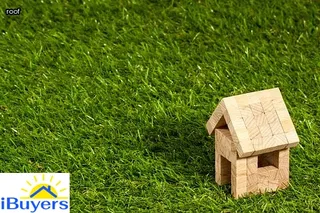
Roof leaks can be quite damaging to a home and be costly to repair. Understanding the common causes of roof leaks is essential in order to properly fix them.
One of the most common causes of roof leaks is worn or damaged shingles, which are easily damaged by storms or simply by age. Seams between sections of roofing can also become loose or separated over time, leading to water infiltration.
Improper flashing around chimneys, vents, and skylights can lead to a leak if not installed correctly. Poorly sealed valleys where two sloped sections of roof meet can create a pathway for water as well.
In some cases, it's not the roof itself that is leaking but rather the gutters or downspouts that are blocked and cause water to back up underneath the shingles. The key is to identify all potential sources when performing DIY roof repairs and tackle them one by one in order to fully fix a leaky roof.
When repairing a leaky roof, the most difficult part is often locating the source of the leak. It can be very challenging to identify where exactly the water is coming from.
To help identify leaks that may not be obvious, homeowners should look for signs of water damage both on and beneath the roof itself. This includes examining any exposed nails or screws as well as searching for any discolorations on ceilings or walls.
Additionally, checking around areas such as skylights, chimneys, vents, and other protrusions can also help detect possible sources of water damage. If all else fails, hiring a professional inspector is always a good option to get an expert opinion on the issue.
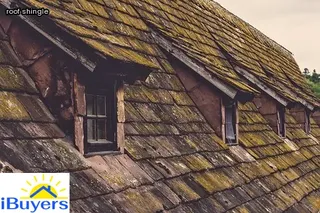
When it comes to fixing minor roof leaks, DIY repairs are a great option that can save time and money. One of the most popular solutions is to use a sealant or caulk to prevent water from seeping in through small cracks or gaps, such as around pipes and chimneys.
If the damage is more extensive, you may need to replace shingles or flashing, which requires some carpentry skills. Another effective solution for small leaks is to apply a waterproof membrane over the affected area.
This will keep water out and protect your roof from further damage. If the leak seems too big for DIY repairs, then it’s best to call in a professional roofer who can assess the situation and advise on the best course of action.
The Complete Guide For DIY Roof Repair: How To Fix A Leaky Roof provides detailed instructions on how to identify and fix minor roof problems yourself so you can avoid costly repair bills.
Maintaining plumbing vent boots is an important part of DIY roof repair. If the plumbing vent boots become damaged, it can cause a leak in the roof and lead to serious damage.
To prevent this from happening, homeowners should inspect the vent boots regularly for any cracks or tears. When inspecting, it's important to check that all seals are properly intact and there are no gaps around the edges of the boot.
Furthermore, any debris should be cleared away so that water can easily flow through and out of the boot. It may also be necessary to replace any cracked or torn boots with new ones in order to avoid further damage to the roofing system.
With a little bit of time and effort, homeowners can ensure their roofs remain leak-free by properly maintaining their plumbing vent boots.
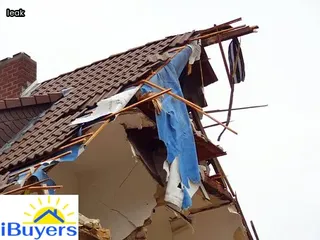
Installing and replacing roof vents can be an important part of DIY roof repair. Roof vents are an essential component in any roofing system, as they provide ventilation for the home and help to regulate temperatures within the attic.
If your current roof vents are old or damaged, it is important to replace them before attempting to repair the leak. When installing a new vent, it is important to make sure it is properly sealed and positioned correctly on the roof deck.
Ensure that the area around the vent is cleared of nails, staples and other debris when installing a new one. When positioning the vent make sure that there are no gaps between it and the shingles or tiles so that no water can get through.
Additionally, make sure that all screws used to secure the vent are tight and not too long, as this may cause damage to your roof. Finally, use a waterproof sealant around all edges of the vent for further protection against leaks.
Strengthening walls and dormers is an integral part of ensuring a properly functioning roof. When dealing with DIY roof repair, it's important to understand the basics of how these structures interact with the rest of the roof.
Strengthening the walls and dormers of a roof can help prevent leaking and other damage that can be caused by weather or time. Start by strengthening the foundations of these structures by reinforcing them with additional support beams, joists, and trusses.
You should also use heavy duty screws when attaching shingles to ensure they won't come loose over time. Finally, make sure any joints are sealed with caulk or sealant to keep water from seeping into your home.
Taking these precautions will help you keep your roof in top condition for years to come.

Accurately diagnosing complex roof problems can be challenging, especially for DIY homeowners. Start by thoroughly inspecting the roof and identifying any visible signs of damage, such as missing shingles or flashing, as well as signs of water entry points like streaks or discoloration on the ceiling.
To check if your roof is leaking, wait for a rainy day and observe the interior of your home for wet spots or stains. If an area inside your home becomes wet during a rainstorm, then you know you have a leak.
A professional roofer can also conduct an infrared scan of your roof to identify any underlying problems that are not visible to the naked eye. Additionally, having a pro inspect the attic area for moisture buildup is essential in determining if there is a deeper issue with your roof.
Lastly, hiring an experienced contractor to inspect and repair complex roofing issues can help ensure that your project is completed safely and efficiently.
Step flashing is an important part of DIY roof repair because it helps to prevent leaks by creating a secure barrier between the roof and walls. To install step flashing correctly, start by measuring the width of the wall or chimney where the flashing will be installed.
Cut the flashing to match the measurements, ensuring that each piece overlaps with an adjacent piece by at least two inches. Then, nail down each piece of step flashing along its bottom edge to hold it in place.
Next, apply roofing cement around the edges of each piece of step flashing, as well as beneath it. Finally, apply shingles over the top of the step flashing and press them down firmly with a hammer or mallet.
Doing this properly can help ensure that your roof remains watertight and free from leaks for years to come.

Caulk is a common material used for sealing gaps and joints, but it cannot be used as a primary repair solution for roof leaks. It can provide temporary protection from water damage, but caulking is not designed to last long-term or bear intense weights.
Caulk will eventually deteriorate and peel away due to heat and cold, which means that new caulking will need to be applied regularly to ensure the roof remains watertight. Furthermore, caulk cannot repair any structural damage caused by the leak and should only be used on roofs that are in good condition.
Additionally, the type of caulk chosen should be suited to the material of the roof - different sealants have different properties that make them more suitable for specific surfaces. When using caulk for DIY roof repair, it is important to understand its limitations so you can decide if this is an appropriate solution or if other methods are necessary.
Patching small holes in a roof can be an intimidating task for those who aren't familiar with DIY repairs. It is important to note that the patching process is different depending on the type of roof material you have.
If you have an asphalt shingle roof, you will need to use flashing and roofing cement to fix any holes or cracks in the shingles. For flat roofs, such as EPDM or TPO, it's best to use a self-adhesive membrane patch kit.
To successfully patch a small hole in your roof, it's important to make sure the area is clean and dry before applying the patch material. Once you secure the patch in place, make sure to cover it with a coat of primer for added protection against moisture damage.
With these tips from The Complete Guide For DIY Roof Repair: How To Fix A Leaky Roof, you'll be able to easily patch any small holes in your roof without needing professional help.

Sealing around brick chimneys can be a tricky task when it comes to DIY roof repair. It's important to ensure that all cracks and crevices are properly sealed in order to prevent water damage.
Start by inspecting the area closely for any visible signs of wear or tear on the sealant, and then use a brush or putty knife to scrape away any old material. Make sure to remove all dirt, dust and debris before applying a new sealant.
A good quality silicone caulk is recommended for best results, as it provides a waterproof barrier against moisture infiltration. Depending on the size of the job, you may need a ladder in order to reach the highest points of the chimney.
Take your time and apply multiple layers of caulk until you're certain that all cracks have been filled and sealed correctly. With a little bit of patience and proper sealing techniques, you can ensure a long lasting fix for your leaky roof!.
Utilizing thermal imaging to locate leaks when repairing a roof can be an incredibly beneficial tool. Thermal imagery allows roofers to identify potential weak spots in the roof that may be causing a leak, as well as being able to pinpoint where the leak is coming from.
This process is incredibly helpful when it comes to DIY roof repair; it can save time, effort and money by allowing the homeowner to accurately locate the source of the leak in order for them to make necessary repairs. Thermal imaging also gives homeowners peace of mind, as they know that they’ve done all they can to properly diagnose and fix their leaky roofs.
With this process, homeowners can have confidence that their DIY roof repairs are done correctly and will last for years to come.
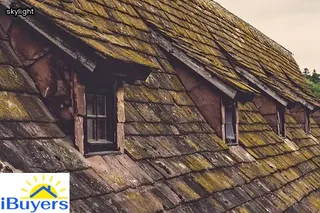
When it comes to urgent roof repairs, time is of the essence. Fixing a leaky roof quickly can help prevent further damage while saving you money in the long run.
There are some DIY tips and tricks that can be used for quick fixes when you don't have enough time to call a professional contractor. Start by finding out where the water is coming from and seal up any holes or cracks with caulk or other waterproof material.
If shingles are missing, try to patch them up with a layer of tar paper and new shingles, or use sheets of aluminum flashing around gaps or vulnerable areas. It is also important to inspect the attic, vents and gutters for signs of water damage.
If you can identify the source, clean it out and make sure all drainage areas are clear so that water can flow away from your home safely. Lastly, check the flashing around chimneys and skylights as they are common sources of leaks.
With these simple yet effective steps, you should be able to fix your leaky roof quickly and easily!.
Vent boots are a critical component of roofing systems, as they help to seal the roof against water intrusion. If these components become damaged or worn out, they can cause leaks in your roof that can be difficult to locate and repair.
DIY roof repair is possible, but it takes some skill and knowledge to properly diagnose and fix any issues with vent boots. To start, you'll want to inspect the area surrounding the vent boot for signs of damage or wear.
Then, you'll need to remove the old boot and replace it with a new one. Make sure the new boot fits securely around the vent pipe before securing it in place with nails or screws.
Finally, apply a waterproof sealant around the edges of the new boot for added protection against water and other elements. With proper attention and care, you can successfully repair any issues with vent boots and keep your roof in top condition for many years to come.

When it comes to roof repairs, the goal should always be to achieve a long-term solution. The best way to do this is by taking preventative measures such as regularly checking for any signs of damage, such as missing or cracked shingles, sagging gutters or eaves, and rust spots on metal roofs.
Additionally, make sure that the roof has proper ventilation and insulation, as these are essential components in keeping the roof in good condition. If some damage has already occurred, then it is important to identify the source of the problem before attempting any repair work.
This can include patching holes in the roof caused by broken branches or other debris, replacing damaged flashing around chimneys and vents, and replacing old shingles with new ones. Finally, be sure to use a quality sealant when repairing any cracks or gaps in the roof’s surface; this will help prevent water from entering your home and causing further damage.
By following these strategies for long-term roof repairs outlined in The Complete Guide For Diy Roof Repair: How To Fix A Leaky Roof you can ensure your roof’s longevity and protect your home from costly water damage in the future.
Caulking is often the go-to solution for fixing a leaky roof, but it's not always the best option. Other alternatives to consider are sealants, mastics and coatings.
Sealants are available in both liquid and paste forms and can be used to fill gaps in corners or around vents. Mastics come in roll-on form and provide a thicker seal than caulk, while coatings are great if you need to fix larger areas of your roof.
Coatings can waterproof and protect against future damage, as well as make your roof look brand new. When considering these alternative solutions to caulking, it's important to remember that they require more preparation before application than caulk does and may require multiple coats for full effectiveness.
The right solution will depend on the type of roof you have and the extent of the damage you're trying to repair. With a little research, you'll be able to find the perfect solution for your DIY roof repair project.
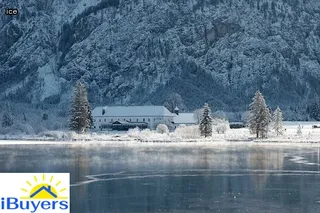
Finding a leak in your roof can be a tricky task, especially if you don't have professional experience. Fortunately, there are some techniques that can help you identify the source of the leak even without calling in a roofing expert.
Start by inspecting the interior of your home for signs of water damage. If you find any stains or discoloration on the ceiling, walls, or in attics and crawl spaces then it's likely that you have a leak nearby.
Once you've identified possible areas of concern, head outside to search for signs of water infiltration along your roof line. Look for cracked shingles, worn sealant around chimneys, and rust spots around flashing.
If these visual clues aren't enough to pinpoint the source of the leak then consider using an infrared camera to scan for moisture buildup hidden beneath your roofing material. With these easy-to-follow tips and tricks from The Complete Guide For DIY Roof Repair: How To Fix A Leaky Roof, finding leaks on your own is now easier than ever!.
Regular maintenance inspections are incredibly important for the upkeep of a roof. By inspecting the roof regularly, homeowners can identify and repair any potential issues before they become major problems.
Inspecting the roof on a regular basis helps to save time and money by minimizing the need for costly repairs. Regular maintenance inspections also help to ensure that the roof is in good condition and is able to provide protection from extreme weather conditions, like heavy rains or winds.
Furthermore, inspections can help to identify any structural weaknesses in the roof which could cause it to collapse over time. Additionally, regular maintenance inspections can help extend the lifespan of the roof, allowing it to last for many years without requiring expensive replacement or repair work.
In conclusion, regular maintenance inspections are essential for keeping a roof in good condition and helping it withstand all types of weather conditions.
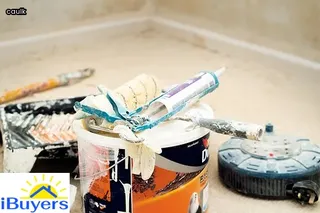
DIY roof repair is a daunting task, but with the right education and materials, you can easily fix a leaky roof. Knowledge is power when it comes to roof repair and understanding the basics of roof anatomy will help you solve common problems.
It's important to know what materials are necessary for roof repair – such as sealants and adhesives – as well as which tools are essential, like ladders, pry bars and hammers. Knowing how to properly inspect your roof for damage will also help you identify which type of repairs need to be done, from patching holes to replacing shingles or tiles.
When tackling DIY roof repairs, safety should always be the top priority. Be sure to read up on safety precautions before attempting any kind of work on your own roof and always wear protective gear such as gloves, goggles and a hard hat.
Education is key in preventing further damage caused by leaky roofs – so make sure you have a complete guide for DIY roof repair before getting started!.
Yes, you can repair a roof yourself if you have the right tools and follow instructions. Repairing a leaky roof is a common DIY project that can be done at home with minimal effort.
First, inspect your roof to identify the source of the leak. If it's a small leak or crack, patching it with caulk or silicone sealant may do the trick.
For larger leaks, you may need to replace shingles or flashing. The Complete Guide for DIY Roof Repair: How To Fix A Leaky Roof provides detailed instructions on how to identify the source of a leak, what materials and tools you'll need for different types of repairs, and step-by-step instructions for fixing a roof yourself.
With this guide in hand, homeowners can save time and money by tackling roof repair projects themselves rather than hiring an expensive contractor.

A damaged roof can be a major source of frustration for any homeowner. Fortunately, there are a few steps you can take to fix a damaged roof. The first step is to assess the extent of the damage.
If it's minor, such as a few shingles or tiles missing, you may be able to repair it yourself. However, if the damage is extensive or involves structural repairs, it's best to consult with a professional roofer. If you're confident in your DIY skills, you'll want to invest in the necessary tools and materials for repairing your roof.
This includes basic items like ladders and safety equipment, as well as specific materials like shingles and flashing tape. Once you have everything you need, start by removing any broken pieces and then replacing them with new material before applying sealant to the area. When finished, inspect your work thoroughly before moving onto another section of your roof.
To ensure long-term success with DIY roof repair projects, make sure that you follow the manufacturer's instructions carefully and always keep safety at the forefront of your mind when working on a roof. With these tips in mind and some patience and dedication, fixing a damaged roof can be achieved without breaking the bank!.
When it comes to roof repair, replacing the roof is often thought of as the only option. However, there are many ways to fix a leaky roof without having to replace it entirely.
DIY roof repair is a great way to save money and time while still achieving good results. The Complete Guide For DIY Roof Repair: How To Fix A Leaky Roof provides step-by-step instructions on how to patch a hole in your roof, seal any gaps around vents, and repair any damaged shingles or tiles.
This guide also includes crucial tips on how to prevent further damage by protecting your roof from further water exposure. With this guide, you can easily learn how to identify potential problems before they become costly repairs.
Furthermore, you can take preventive action by inspecting your roof regularly for signs of wear and tear or damage caused by storms and other weather conditions. By implementing these tips, you can ensure that your roof remains strong and secure for years to come without needing an expensive replacement job.
The best way to patch a roof is to start by identifying the source of the roof leak and then making necessary repairs. One of the most efficient and cost-effective ways to fix a leaky roof is to do it yourself (DIY).
However, it is important to note that if the damage is too extensive, then a professional should be consulted. A comprehensive guide for DIY roof repair can provide step-by-step instructions on how to properly repair a leaky roof.
This guide should include information on how to identify the source of the leak and what materials are needed for the job. It should also provide tips on how to safely work on roofs and how to use various tools and sealants in order to ensure that your roof repairs are successful.
By following these steps, you can be sure that your roof will be repaired quickly and effectively with minimal damage done.
A: Depending on the severity of the damage, you may need to replace individual roof tiles. If the damage is more widespread, you may need to cover the entire roof with a tarp until it can be professionally repaired.
A: To make your roof water resistant and waterproof while preventing moss growth, you should apply a plastic membrane over the surface of the roof. This will help to create an impermeable barrier that prevents water from seeping in and keeps out moisture that moss needs to grow.
A: To repair a roof that has been damaged by downpours, you should begin by nailing any loose shingles back into place. Then, apply a tarp to the roof to help protect it from further rainwater damage.
A: Repairs to the roof should be done by a qualified contractor who is experienced in repairing roofs with damaged dams. The contractor should provide you with a warranty on their work and the materials used. It is important to ensure that the warranty covers any potential damage caused by future weather conditions.
A: To repair a roof affected by ice dams, it is best to use rubber sheeting and fasteners to reinforce the area and ensure a watertight seal. Glue can also be used to attach the sheeting to any weak or damaged areas.
A: Before attempting to repair your roof yourself, make sure you understand the risks involved and use the proper safety precautions. To repair your asphalt shingle roof, you will need to clean the area of debris; use roofing cement to secure any loose shingles; add roofing felt in the area that needs repairing; apply a thin bead of sealant along the edges of the new shingle; then place and press down firmly on the new shingle. Finally, cover the entire area with a thin layer of sealant.
A: Washers should be placed on either side of the defect and connected using screws or nails for better stability. This will help close any gaps between the Sheathing and Plywood pieces and prevent further damage from occurring.
A: To repair a roof, you will need to assess the damage, gather the necessary materials, and make any necessary structural repairs. Depending on the type of roof you have, you may need to patch holes, replace shingles or tiles, and apply sealant. After these repairs have been made, it is important to inspect your roof regularly for further signs of damage.
A: To repair a roof and protect it from UV exposure, use an Ethylene Propylene Diene Monomer (EPDM) membrane. This material is highly resistant to UV exposure and provides excellent protection for your roof.
A: Depending on the extent of damage, you may need to replace the entire roof or just certain shingles. If you are unable to assess and repair the damage yourself, you should contact a professional roofer who is experienced in repairing roofs damaged by tornadoes or fallen trees.
A: To repair a roof, you will need to inspect the damage, purchase materials such as shingles or tar paper, and complete the repairs following instructions from the material's manufacturer. It is also important to take safety precautions such as wearing gloves and using ladders properly.
A: A roofer with experience in metal roofing will need the skillset to handle cutting, forming, and welding steel panels as well as mixing and applying mortar for repairs. Reasoning and problem-solving skills are also necessary to ensure the roof is repaired properly.
A: If the damage is minor and confined to shingles, you may be able to replace or patch the affected areas. If the hail damage is more extensive, it will likely require professional repair.